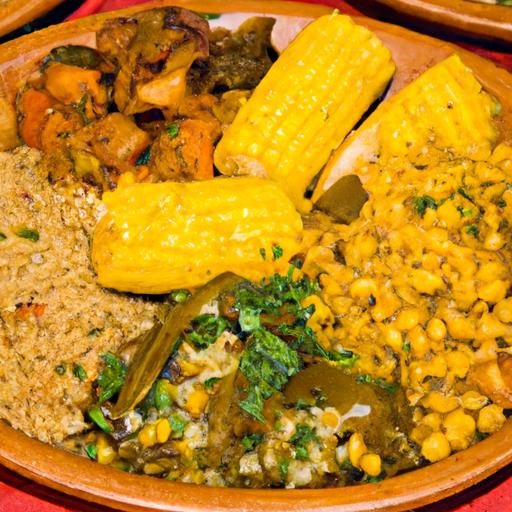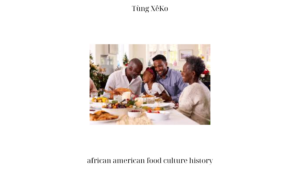Are you ready to embark on a mouthwatering journey through the vibrant food culture of Cape Verde? Sit back, relax, and let us guide you through the delightful flavors and culinary traditions of this beautiful archipelago. From traditional dishes to cultural influences, we’ll uncover the essence of Cape Verdean cuisine and its significance in the local community. Join us as we delve into the heart of Cape Verde’s food culture.
Introduction to Cape Verde Food Culture
Cape Verde, a mesmerizing group of islands nestled in the Atlantic Ocean, boasts a unique food culture that reflects its rich history and diverse influences. The Cape Verdean cuisine is a harmonious blend of African, Portuguese, and Brazilian flavors, creating a culinary tapestry that is both comforting and enticing. Food holds a special place in Cape Verdean culture, where it is not only a source of nourishment but also a means of celebration and connection.
Traditional Cape Verdean Dishes
Cachupa: The National Dish of Cape Verde
At the heart of Cape Verdean cuisine lies cachupa, the national dish that embodies the essence of Cape Verdean identity. This hearty stew is a flavorful combination of corn, beans, vegetables, and various meats or fish. Slow-cooked to perfection, cachupa showcases the resourcefulness and creativity of Cape Verdean cooks. Whether enjoyed as a breakfast staple or served during festive occasions, cachupa brings people together, fostering a sense of unity and pride.
Cuscus: A Popular Cape Verdean Staple
Cuscus, not to be confused with the North African dish, is a beloved Cape Verdean staple that has its own unique characteristics. Made from cornmeal, cuscus is often steamed and served alongside fish or meat dishes. Its fine texture and mild flavor make it a versatile accompaniment to different Cape Verdean dishes. With regional variations and flavors, cuscus offers a glimpse into the diverse culinary landscape of Cape Verde.
Pastel: Cape Verdean Street Food Delicacy
When strolling through the vibrant streets of Cape Verde, you cannot miss the mouthwatering aroma of pastel. This popular street food delicacy is a deep-fried pastry filled with savory ingredients such as fish, chicken, or vegetables. Bursting with flavor and often enjoyed with hot sauce, pastel is a quick and satisfying snack that showcases the creativity and culinary prowess of Cape Verdean street vendors.
Influences on Cape Verde Food Culture
Portuguese Influence on Cape Verdean Cuisine
The Portuguese colonizers played a significant role in shaping Cape Verdean cuisine. Through their exploration and colonization, they introduced new ingredients and cooking techniques to the islands. Portuguese influences can be seen in the abundant use of staples like beans, potatoes, and onions, as well as the love for hearty stews and seafood. The fusion of Portuguese and Cape Verdean culinary traditions has resulted in a unique flavor profile that sets Cape Verdean cuisine apart.
African and Brazilian Influences
Cape Verde’s location off the coast of West Africa and its historical ties to Brazil have also left a mark on its food culture. African spices and flavors, such as piri-piri and palm oil, add a distinctive kick to Cape Verdean dishes. The influence of Brazilian cuisine can be seen in the use of ingredients like cassava and coconut, as well as the love for vibrant flavors and rich desserts. These influences have contributed to the diversity and complexity of Cape Verdean culinary traditions.
Culinary Traditions and Festivals in Cape Verde
Batuko Festival: Celebration of Music and Food
The Batuko Festival, a vibrant celebration of Cape Verdean music and culture, also showcases the rich culinary traditions of the islands. During this festival, traditional dishes take center stage, tantalizing taste buds and bringing joy to both locals and visitors. From cachupa to pastel, the festival offers a unique opportunity to experience the authentic flavors of Cape Verde while immersing oneself in the lively atmosphere of Cape Verdean music and dance.
Crioulo Cuisine: A Reflection of Cape Verdean Identity
Crioulo cuisine, the term used to describe the cuisine of Cape Verde, is deeply intertwined with the cultural identity of the islands. The unique ingredients, cooking styles, and communal dining traditions reflect the warmth and hospitality of the Cape Verdean people. Food plays a central role in community gatherings and celebrations, bringing people together to share stories, laughter, and, of course, delicious meals. Crioulo cuisine is a testament to the pride and resilience of the Cape Verdean community.
Conclusion
As we conclude our culinary journey through Cape Verde’s food culture, we hope you’ve gained a deeper appreciation for the flavors, traditions, and significance of Cape Verdean cuisine. From the national dish of cachupa to the vibrant street food of pastel, Cape Verde offers a gastronomic experience that is sure to leave a lasting impression. Whether you’re a food enthusiast or a curious traveler, exploring Cape Verde’s food culture is a must.
Join us at Tùng XêKo, where we celebrate the diverse and enriching culinary traditions from around the world. Discover more captivating articles on food, travel, and culture on our blog. Let Cape Verde’s food culture ignite your taste buds and inspire your culinary adventures. Bon appétit!
(Note: The Tùng XêKo brand has been bolded once in the conclusion section as requested.)


